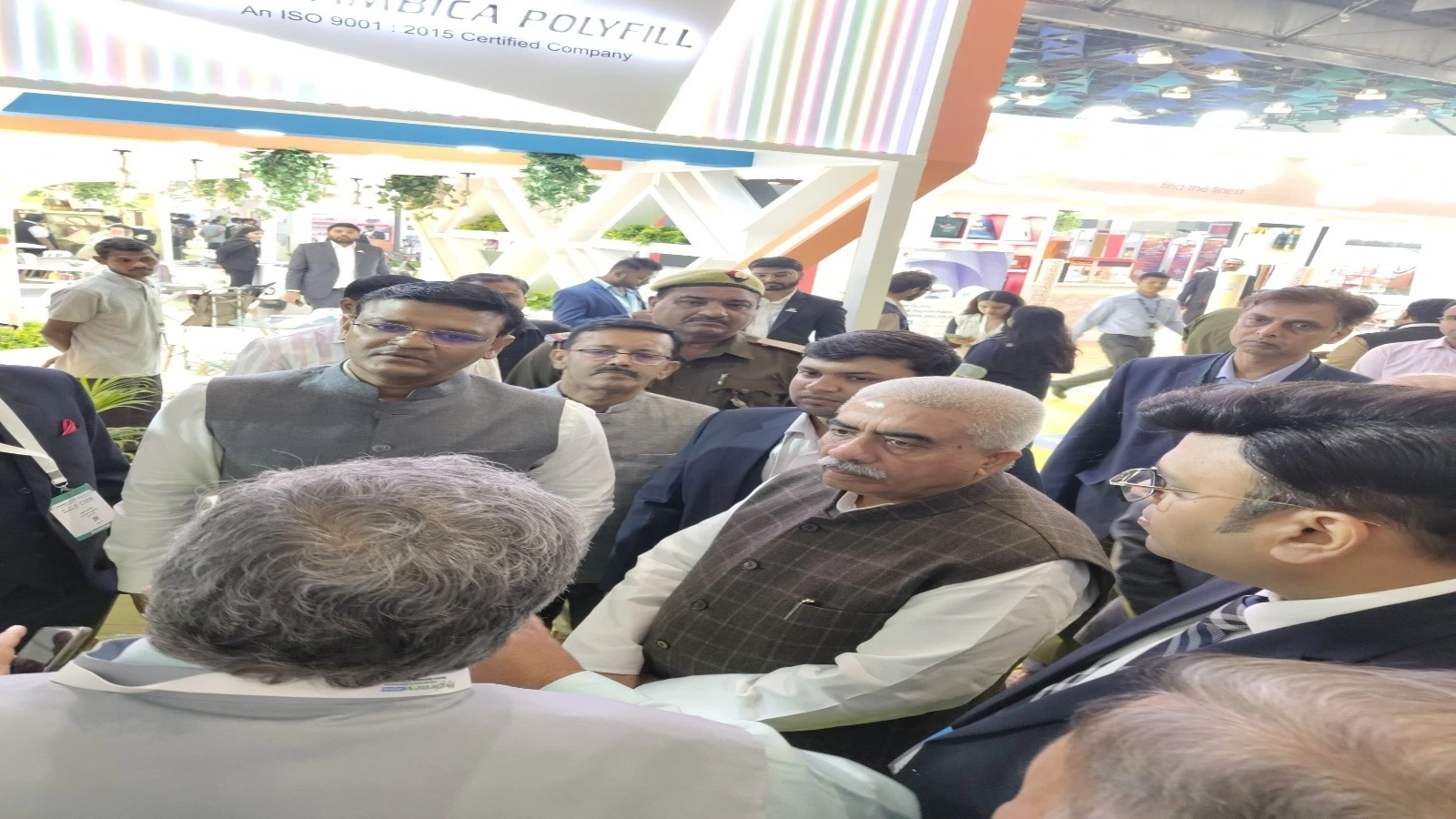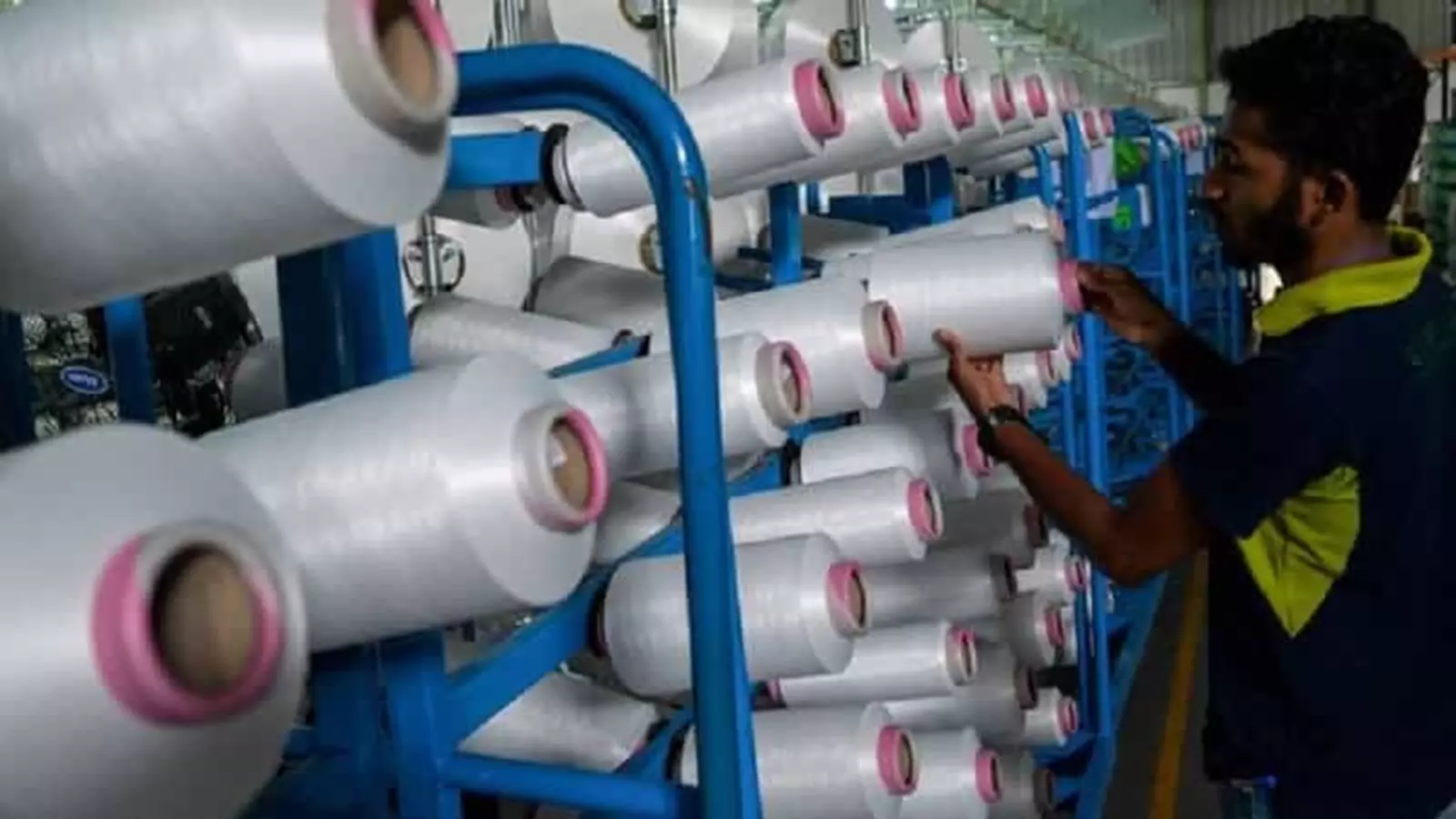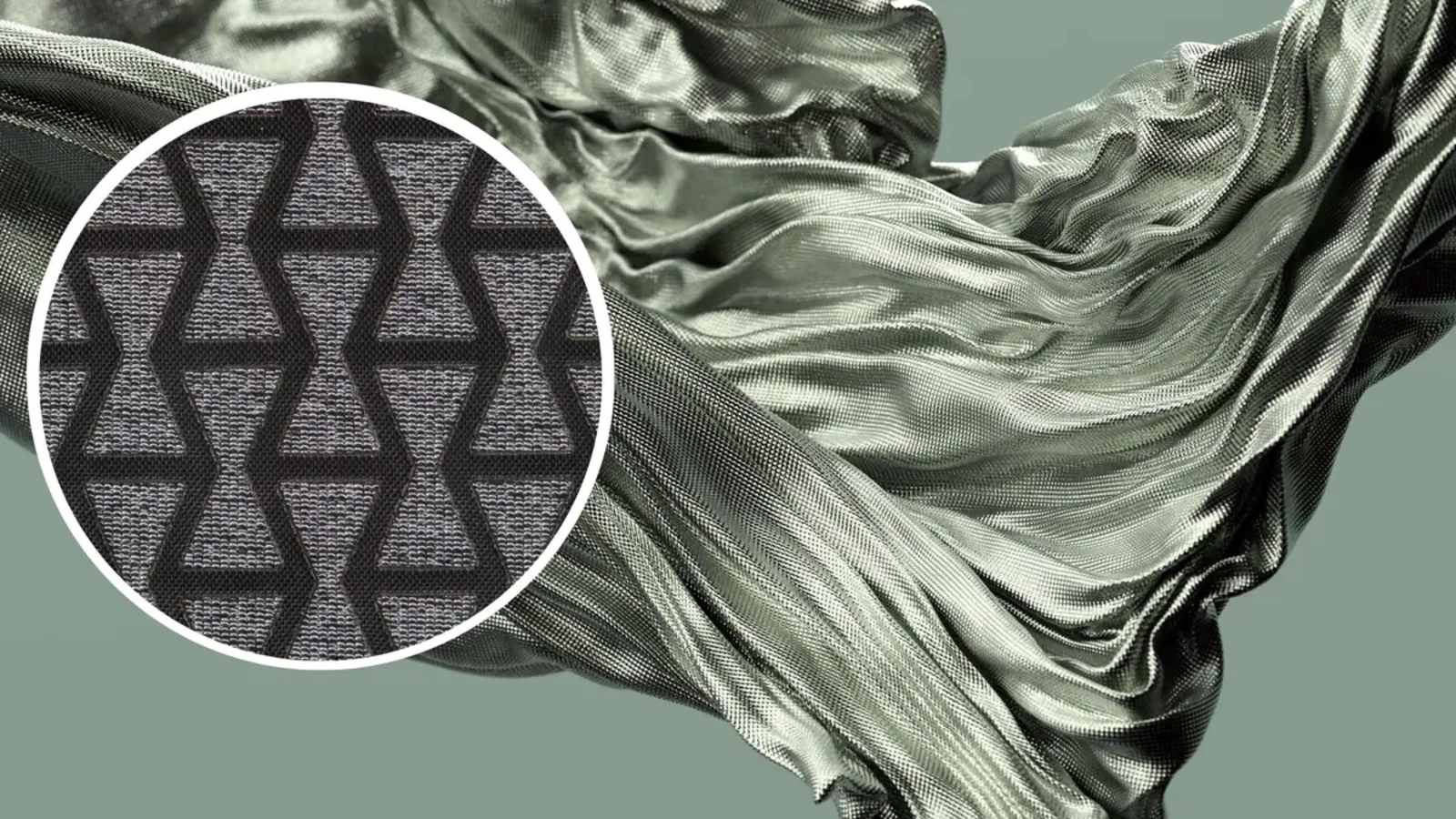Innovations in Textile Printing Technology for Upholstery Fabric Production
Share Post
The world of textile manufacturing has undergone a tremendous transformation in recent years, fueled by a growing demand for customization, sustainability, and efficiency. Among the most significant advancements in this realm are the innovations in textile printing technologies and machinery, particularly in the context of upholstery fabric manufacturing.
Upholstery fabrics require a unique blend of aesthetics, durability, and environmental responsibility, and modern printing technologies are rising to meet these complex demands. Traditional printing techniques, while effective, often lacked the speed, precision, and environmental consciousness that today’s markets require.  As a result, new-age digital printing methods like Direct-to- Fabric (DTF) printing and Dye Sublimation printing have emerged as frontrunners, offering highly efficient, eco- friendly, and versatile solutions for the textile industry. The impact of these technologies is especially profound in the upholstery sector, where customization and quality are crucial. From intricately patterned sofas to bold drapes and personalized furniture coverings, the aesthetics of interiors are now deeply intertwined with advancements in textile printing.
As a result, new-age digital printing methods like Direct-to- Fabric (DTF) printing and Dye Sublimation printing have emerged as frontrunners, offering highly efficient, eco- friendly, and versatile solutions for the textile industry. The impact of these technologies is especially profound in the upholstery sector, where customization and quality are crucial. From intricately patterned sofas to bold drapes and personalized furniture coverings, the aesthetics of interiors are now deeply intertwined with advancements in textile printing.
The shift towards digital printing technologies represents more than just an upgrade in machinery. It signifies a broader movement in textile manufacturing toward flexible, on-demand production models that reduce waste and improve responsiveness to consumer trends. Gone are the days when upholstery fabric manufacturing was bound by the constraints of bulk production and long lead times. Today, thanks to modern machinery and digital innovation, manufacturers can quickly adapt to market needs, offering customers a broad range of designs, textures, and colors with unmatched consistency. These innovations also address one of the industry’s most pressing challenges: sustainability.
Eco-conscious consumers are increasingly scrutinizing the environmental impact of textile production, and digital printing technologies provide a viable solution through reduced ink and water usage, minimal waste generation, and compatibility with environmentally friendly materials. As a result, manufacturers not only benefit from enhanced productivity and cost savings but also align themselves with the values of a rapidly evolving market.
Moreover, the development and adoption of high- performance textile printers have brought a level of precision and design versatility that was previously unattainable. This is particularly beneficial in upholstery fabric manufacturing, where color accuracy, sharp design replication, and print durability are essential. Innovations in printhead technology, ink formulations, and fabric handling mechanisms have all contributed to improving output quality while maintaining the robustness required for everyday use of upholstery. These printers are now equipped with features like automated calibration, wide-format capabilities, and multi-color ink systems, enabling them to cater to a vast array of fabric types and end-user applications. Thus, the technological revolution in textile printing is not just enhancing the visual appeal of upholstery fabrics but also reshaping the entire value chain of fabric production from design conceptualization to final product delivery.

Direct-to-Fabric (DTF) Printing
Direct-to-Fabric (DTF) printing is one of the most notable breakthroughs in modern textilemanufacturing. As the name suggests, this technology enables the direct application of designs onto fabric without the intermediary step of transfer paper. This not only simplifies the production process but also minimizes material waste, making it a preferred method for eco-conscious manufacturers. The technology utilizes specialized inks and high-precision printheads to produce vivid, high-resolution prints directly on various fabric types. Its ability to handle a wide range of textiles including natural fibers like cotton and silk, as well as synthetic blends makes it a highly versatile option for upholstery fabric manufacturing.
One of the key advantages of DTF printing is its compatibility with both natural and synthetic fabrics, allowing manufacturers to diversify their offerings without switching technologies. This versatility means that whether the fabric is destined for a rustic cotton couch or a luxurious silk-covered chair, DTF printing can deliver consistent and vibrant results. In terms of environmental impact, DTF significantly reduces the need for auxiliary materials such as transfer papers and pre-treatment chemicals, thereby lowering the carbon footprint of the production process. Additionally, the inks used in DTF are often water-based and free from harmful solvents, aligning well with global sustainability goals and regulations.
From an operational standpoint, DTF printing enhances efficiency by cutting down production times and labor costs. The direct printing process streamlines workflows, enabling quicker turnarounds  and facilitating just-in-time manufacturing models. This is especially advantageous in an industry where trends change rapidly and customization is in high demand. With DTF, manufacturers can offer bespoke solutions without the delays typically associated with conventional methods. Whether it’s a unique pattern for a boutique hotel or a limited-edition fabric for high-end furniture, DTF printing allows for rapid prototyping and swift market deployment.
and facilitating just-in-time manufacturing models. This is especially advantageous in an industry where trends change rapidly and customization is in high demand. With DTF, manufacturers can offer bespoke solutions without the delays typically associated with conventional methods. Whether it’s a unique pattern for a boutique hotel or a limited-edition fabric for high-end furniture, DTF printing allows for rapid prototyping and swift market deployment.
Technological advancements in DTF printing machinery have further elevated its appeal. For instance, MTuTech Direct-to-Fabric printers exemplify the high-performance capabilities of modern DTF equipment. These printers feature robust Ricoh Gen5 or Gen6 printheads, which ensure high-speed performance and precise color application. With a print width of 1800mm and the ability to handle CMYK color configurations, they are well- suited for complex and large-format upholstery designs. Their eco-friendly ink systems and high-resolution output make them ideal for premium applications, such as silk printing for luxurious interiors or intricate multi-color designs on heavy-duty fabrics. These machines also integrate user-friendly interfaces and automated maintenance systems, which reduce downtime and improve productivity, making them a smart investment for textile manufacturers aiming to stay ahead of the curve.
Dye Sublimation Printing
Dye Sublimation printing represents another cornerstone in the evolution of Textile Printing, particularly well-suited for synthetic fabrics such as polyester. Unlike DTF, dye sublimation requires a heat transfer process, where solid dye is converted into gas and bonded to the fabric at a molecular level. This results in prints that are not only vivid and high-resolution but also highly durable. The sublimation process ensures that the ink becomes part of the fabric itself, rather than merely sitting on top of it. This leads to prints that do not crack, fade, or peel even after extensive use and multiple washes, making dye sublimation an excellent choice for upholstery applications that demand longevity and resilience.
One of the standout features of dye sublimation is its ability to produce exceptionally vibrant colors. The gas- based transfer process allows for deep penetration into the Fibers, creating a rich color palette with seamless gradients and sharp details. This makes it ideal for producing eye-catching designs on upholstery fabrics used in both residential and commercial settings. Whether it’s a bold abstract print for a modern sofa or a detailed floral pattern for vintage-style drapery, dye sublimation can achieve superior aesthetic results that captivate consumers and interior designers alike.

In addition to its visual advantages, dye sublimation is an environmentally friendly technology. It uses water- based inks that generate minimal waste, and the absence of additional chemicals or adhesives makes it a cleaner alternative to many traditional methods. Moreover, the efficiency of the sublimation process translates into reduced energy consumption and lower overall production costs, particularly when scaled for mass manufacturing. This eco-efficiency is increasingly important as upholstery manufacturers seek to balance cost-effectiveness with environmental responsibility.
Machinery used in dye sublimation printing has also seen substantial innovation, with brands like ColorJet leading the charge. These printers are designed for high-speed, high-volume production, capable of handling both natural and synthetic fabrics through the use of various ink types such as pigment, reactive, disperse, acid, and sublimation inks. The advanced engineering behind these machines ensures maximum uptime and production flexibility, which is crucial in the fast-paced world of upholstery fabric manufacturing. With features like automated fabric feeding, precise temperature control, and intelligent ink management systems, modern dye sublimation printers deliver exceptional performance while minimizing operational complexity.
Furthermore, the scalability of dye sublimation printing makes it suitable for a broad range of upholstery applications, from small custom orders to large-scale commercial productions. This adaptability is particularly valuable in today’s market, where demand can vary widely based on seasonality, trends, and customer preferences. By enabling manufacturers to quickly adjust their output and maintain consistent quality across different fabric types and design complexities, dye sublimation helps future-proof textile operations in a competitive landscape.

03:19 PM, Sep 23
A PHP Error was encountered
Severity: Warning
Message: Trying to access array offset on value of type null
Filename: user/single_post.php
Line Number: 294
Backtrace:
File: /home/textilebusiness/sportstextiles.in/application/views/user/single_post.php
Line: 294
Function: _error_handler
File: /home/textilebusiness/sportstextiles.in/application/controllers/User.php
Line: 2779
Function: view
File: /home/textilebusiness/sportstextiles.in/index.php
Line: 315
Function: require_once






.webp)



1.webp)



























